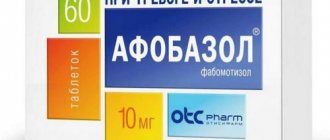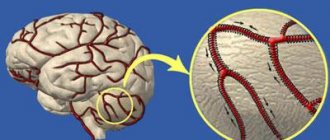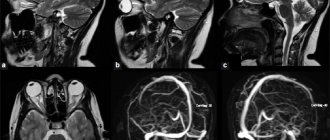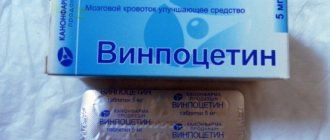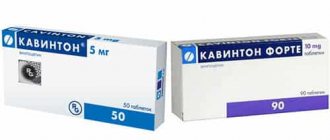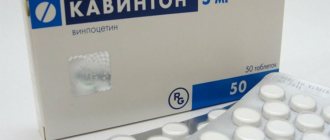What kind of disease is this?
Migraine is an attack of the most intense and acute pain caused by vascular disorders, and in no way associated with pressure or tension.
The main question when prescribing medications is: are the blood vessels narrowed or dilated during migraine? With migraine, several stages of changes in the tone of the vascular wall occur and the headache is associated with their expansion.
About 90% of the world's population suffers from this disease. Attacks can be either single or chronic.
During a migraine, the pain is usually localized to one side of the head. However, later the pain may transfer to the other side.
Why is vasoconstriction dangerous?
With age, vascular channels lose elasticity, become fragile, and excess cholesterol begins to settle on the walls. Plus, the lifestyle that most people lead is far from calm and healthy.
Living in constant stress, poor nutrition, and a sedentary lifestyle lead to the fact that, along with vasoconstriction, people develop hypertension, irregular heart rhythms, and poor circulation.
Naturally, this leads to problems with blood supply to the brain. This chain of reactions is also familiar to young patients who have been suffering from symptoms of poor circulation since the age of 20.
The main danger of such failures is heart attack or stroke . Over the past few decades, not only older people, but also very young patients have died from this disease. You can protect yourself from such an inglorious end with the help of herbal preparations. The most important thing is to come to your senses in time and begin prevention or treatment.
Misconceptions and myths about its origin
Several misconceptions and myths hinder effective treatment of migraines.
Here are the most common lies :
- The cause of pain is cerebral vascular spasm. The spasm is not associated with pain, but corresponds to the stage of the aura. At this stage, visual disturbances occur in the form of flashes of light, flickering dots, and sensory or motor disorders in the limbs. There may be mild discomfort with migraines without an aura. Pain is associated precisely with the dilation of blood vessels.
- There is an opinion that antispasmodics will help get rid of pain (for example, No-shpa). In this case, antispasmodics are absolutely useless, since the pain is caused by vasodilation, and not by spasm.
- Pain sensations occur within the brain tissue. The brain itself cannot get sick, since the brain cells are incapable of feeling anything. The pain is caused by the expansion of areas of the vascular system that are located in the dura mater of the brain.
- Vascular medications will help cope with migraines. Such remedies can only improve blood circulation, but they help against migraines in rare cases.
Dilated vessels and methods for their treatment
Dilated vessels are not only an aesthetic defect, which manifests itself in the form of a vascular network on the face and legs. Dilation of veins or arteries is a characteristic symptom of vascular disease.
Vessels and their functions
The vessels of the circulatory system: veins, arteries and capillaries - deliver blood to all organs and tissues of the human body. Together they represent a closed system where everything is interconnected.
Arteries deliver blood enriched with oxygen and necessary substances to the organs, capillaries ensure their delivery to the organs, and veins drain oxygenated blood. Organs and tissues suffer when vascular diseases occur.
As a result of certain diseases, poor lifestyle and other factors, the flexibility and elasticity of blood vessels is lost, occlusions and stenoses occur in them.
Dilated veins
A common problem that indicates vascular dysfunction is varicose veins. It occurs in any part of the venous system, but the vessels in the legs are most often affected. Varicose veins are not only an aesthetic problem.
Varicose veins are often accompanied by pain and heaviness in the legs, swelling and cramps - characteristic symptoms of vascular disease of the extremities. As a result of complications of the disease, there is a threat of thrombosis and the appearance of trophic ulcers.
If you have the above symptoms, contact a specialized vascular center or make an appointment with a phlebologist.
Diagnosis of varicose veins:
- Examination and history taking;
- Duplex scanning of veins;
- Ultrasonography;
- Phlebography of the veins of the extremities;
- Phlebomanometry.
After examining the patient, the doctor determines the need for one or another type of vascular diagnostics. When the disease is diagnosed, the patient is offered the following treatment methods for varicose veins:
- Removal of affected veins (phlebectomy)
- Laser photocoagulation;
- Sclerotherapy (with the help of a special substance, damaged veins seem to stick together and disappear);
- Radiofrequency coagulation of veins.
Dilated arteries
Dilated arteries are the first sign of a disease called aneurysmal dilatation of the artery. According to one version, due to the deposition of cholesterol, the walls of blood vessels become thinner and stretched, and a protrusion is formed - an aneurysm.
Causes
The causes of vasodilation are hypertension, severe injuries, the last stages of syphilis, atherosclerosis. Moreover, atherosclerosis is the most common of them. The deposition of cholesterol with the formation of plaques in the walls of the arteries causes the causes of vascular atherosclerosis.
Because of this, the elasticity of the blood vessels decreases, the walls become weakened. Under the influence of blood pressure, they stratify and aneurysms form. They not only interfere with the normal blood supply to organs: rupture of an aneurysm is extremely dangerous due to the threat of hemorrhage.
Diagnostics
The patient sometimes has no idea that the vessel is dilated, since the disease often does not show obvious symptoms.
Modern diagnostic methods help the doctor to identify pathology - ultrasound of arteries, CT of vessels and angiography.
To see all the pathological changes in the arteries, predict the further course of the disease and determine the most optimal treatment tactics, radiopaque research methods, such as angiography, are used.
How do seizures manifest?
A migraine attack goes through several successive stages (what are the phases and duration of a migraine attack?). Therefore, pain does not occur immediately. At the first stage, vasoconstriction occurs, then dilation and atony of the vascular wall, followed by swelling around the vascular tissues. There are several theories about the origin of such complex biochemical processes. It is believed that biologically active substances, including serotonin, play a special role.
Spasmodic reaction
This is the first stage of migraine, in which cerebral vasospasm occurs. The person does not yet feel pain, but goes through the aura stage or experiences only a slight malaise.
Spasm is a narrowing of blood vessels in the brain, as a result of which brain cells experience oxygen starvation.
Causes of spasm:
- mechanical damage to the brain or neck (various injuries);
- fatigue of the senses (vision, smell, hearing), for example, due to prolonged work at the computer, listening to loud music on headphones, exposure to harmful toxic substances;
- insufficient blood supply to nourish the brain. May be associated with problems in the neck area (osteochondrosis and other diseases);
- oxygen starvation (the blood is not sufficiently saturated with oxygen);
- changes in blood pressure - can compress the capillaries, which will cause disruption of the circulation of blood flow throughout the circulatory system;
- body fatigue, sedentary lifestyle.
ATTENTION! The spasm usually occurs before the headache. It may be accompanied by a migraine aura, nausea, and weakness.
Extension
Due to spasm, blood vessels lose tone .
Vessel tone is elasticity that maintains the walls of the vessel in a tightened mode, despite blood pressure. Thus, losing tone, the walls of the capillaries weaken and expand from the pressure of the blood flow.
It is at this stage that a headache attack occurs, that is, a migraine itself. Such an attack can last from several hours to 3 days.
Signs of vasodilatation:
- intense pain of a pulsating nature. The pain may be localized in one part of the head (where the spasm occurs);
- nausea and vomiting (we wrote more about the causes of these symptoms and how to eliminate them here);
- increased pain when exposed to loud sounds, strong odors, bright light, physical activity;
- sleep disturbance and lack of appetite.
Swelling
Edema appears due to an increase in the permeability of blood vessels to water against the background of their expansion, as a result of which excess fluid forms in the brain tissue. The situation is aggravated when a pinched vessel (area) prevents not only the influx of new blood, but also impedes the outflow and a dull headache occurs, rather than a pulsating one.
Signs of edema:
- a feeling of heaviness in one area of the head;
- There may be some swelling of the eyelids.
When pressure increases, blood vessels dilate or contract
Since cardiovascular diseases are among the most common, it is important to know exactly what causes them and what causes them. This article will talk in detail about whether blood vessels narrow or dilate with increased pressure.
It will also be described under what circumstances the pressure decreases and increases, the blood vessels narrow, what to do about it, and how to avoid it.
What happens to blood vessels at high pressure
Hypertension is a disease characterized by a persistent increase in blood pressure. The disease causes serious harm not only to the organs and systems of the body. Jumps in blood pressure (blood pressure) negatively affect all elements of the circulatory system. Do blood vessels narrow or dilate at high blood pressure? How dangerous is a change in the vascular lumen?
The relationship between blood pressure, the heart and the vascular system
What is blood pressure? Essentially, blood pressure is an indicator of the force that blood exerts on the walls of blood vessels during its movement. There is a direct relationship between blood pressure and myocardial function: the strength of blood pressure decreases as blood moves away from the heart.
During each contraction of the myocardium, the walls of blood vessels stretch. This promotes the free movement of blood. At the same time, as a counterbalance to tension, relaxation of the blood vessels occurs. Blood pressure numbers show how much blood pressure is exerted on the vessels at the time of measurement.
The value of blood pressure is described by two indicators: upper (systolic) and lower (diastolic). Systolic shows blood pressure at the beginning of the period of myocardial contraction, and diastolic - at the end of the contractile movement.
Source: https://med-perevozka.ru/voprosy-k-doktoru/kogda-povyshaetsya-davlenie-sosudy-rasshiryajutsya-ili-suzhajutsya.html
Treatment - how to deal with discomfort?
Several simple ways to eliminate and prevent migraines:
- When the first symptoms of migraine (spasm) appear, you need to eat something sweet, drink coffee or tea with sugar. Thus, glucose will help with oxygen starvation of the brain. You can read about when you can drink coffee when you have a migraine, as well as learn useful recipes and contraindications here.
- It is also recommended to perform a breathing technique: inhale deeply several times and exhale slowly.
- An effective way to relieve an attack is sleep.
ATTENTION! If you have constantly recurring migraines, you should seek advice from an appropriate doctor - a neurologist. - Light physical activity and walks in the fresh air help restore blood circulation.
- Good preventive measures for strengthening blood vessels are massage and contrast showers.
- Also, you should pay attention to your diet, in particular, reducing your carbohydrate intake and adding vitamins such as C and B to your diet.
Effective drugs
Two groups of drugs can be distinguished:
- to relieve acute symptoms;
- prophylactic - to prevent an attack.
Quick-acting remedies include:
- Analgesics and non-steroidal anti-inflammatory drugs: Nurofen, Paracetamol, Pentalgin, Analgin, Diclofenac, Ketorolac, Paracetamol, Indomethacin, etc.
- Ergotamines have a tonic effect on blood vessels. These are ergot preparations. They are used directly during the attack itself. These include:
- Ergotamine (drops under the tongue);
- Dihydrergot (nasal spray).
- Triptans - constrict blood vessels in a short time, thereby eliminating pain. Affects all symptoms at once. These include: Amigrenin, Sumamigren, Zolmitriptan, Imigran, Trimigren, Zomig, etc. They are produced not only in the form of tablets, but also in suppositories and sprays. When taking fast-acting drugs, you must adhere to the following regimen:
- First of all - analgesics.
- If there is no improvement after 45 minutes, use triptans.
The following drugs are prescribed for prevention::
- Anaprilin;
- Topiramate;
- Velafax;
- Naproxen et al.
IMPORTANT! Medicines for preventive purposes are prescribed only by the attending physician, on an individual basis.
We talked in detail about migraine prevention measures in a separate article.
Traditional methods
The following methods can be used to relieve pain::
- apply a cold compress to the sore area of the head;
- soak a cotton swab in onion juice and apply to your ear;
- apply a cabbage leaf compress to the sore spot;
- drink juice from fresh currants;
- breathe in the vapors of rosemary oil, or a mixture of camphor and ammonia vapors.
You will find more information on how to relieve a migraine attack at home in our material.
What to do with dilated vessels?
Oh! These treacherously ugly thin and thick, red and blue veins on the face and legs. What woman has not studied them, peering intently at her face in the mirror or examining her legs.
And they seem to appear out of the blue, but nevertheless, inexorably and every year, more and more. Some people try for a long time and persistently not to notice them, others begin to worry when others still cannot see them.
However, the fact remains: this problem affects almost every person in one way or another.
When you tell a patient that he has dilated blood vessels, many are surprised. Because by vessels, everyone usually understands something different: some only have thin blue veins, others, on the contrary, thick varicose veins. In fact, vessels are all those large and small tubes (channels) through which blood or lymph flows in the body.
This article deals only with blood vessels that manifest themselves externally on the skin in one way or another. The color of the vessel depends on what kind of blood flows through the vessel - arterial or venous.
On the skin, as a rule, either thin red vessels with a diameter of less than 1 mm (these are usually capillaries or arterioles) or thicker vessels of various shades of blue and violet with a caliber of up to several mm are visible.
Significantly larger vessels (more than 1 cm in diameter) may also appear on the legs - so-called varicose veins, which look like ugly knots and tangles protruding above the skin.
What determines the appearance of these vessels that do not decorate a person?
Do not think that they were not in this place at all.
As a rule, they all existed from birth, located deep in the skin or under it, and each of them played a necessary role in blood circulation.
And they would live and live, and people would not know about their existence if one day they did not begin to expand and approach the surface of the skin and because of this they became clearly visible and ugly.
Why do these vessels begin to expand?
This is usually due to various factors, the most important of which are excess solar radiation, liver disease, etc. In a number of women, they often begin to form during or after pregnancy.
At the same time, in many people they can appear without the above factors, since the basis for vascular dilation is heredity. At the same time, a certain weakness and instability to the loads of the elastic component of the vascular wall is inherited, which over time leads to the expansion of some vessels.
Therefore, people with “bad” heredity should, if possible, protect themselves from exposure to factors that cause excessive vasodilation (bath, sun, alcohol, etc.).
What to do if dilated vessels do appear?
The first question to answer is: is it dangerous to health? For the most part, unless we are talking about varicose veins, the answer is no.
Although a small proportion of such patients may require additional examinations to exclude other possible diseases in which such vascular changes are one of the symptoms.
Your doctor (dermatologist or angiologist) will tell you whether additional examination is necessary or not.
Once it has been established that your dilated vessels are only a cosmetic problem, the next question arises: “What can be done about them?”, or rather: “What can be done to make them disappear?”
Let me make a reservation right away that today there are no tablets, creams, ointments or other medications that could eliminate dilated blood vessels.
These methods are more suitable for preventing the appearance of new dilated vessels, as well as the use of compression hosiery (special stockings, tights) when dilating blood vessels in the legs.
To treat dilated vessels, more aggressive technologies are usually required.
Let us first consider the methods of treating dilated facial vessels. As a rule, a wide variety of blood vessels appear on the face. Very often these are blue, sometimes red vessels on the wings and back of the nose, sometimes of such intensity that even men are forced to wear makeup so as not to read suspicion of excessive drinking in the eyes of everyone they meet.
Often thin red vessels fill the cheeks so that the latter look crimson at any time. Sometimes spots and dots of various sizes are “scattered” across the face, from which multiple thin veins radiate like rays. No matter how these vessels look, one thing is important: a) they do not add beauty; b) do not stand in one place, but progress.
To treat these vessels, methods such as electrocoagulation and cryodestruction were previously used (and in some places are still used today), i.e. destruction by electricity or freezing.
There is no doubt that these methods can destroy an enlarged vessel, but under one condition: first you must destroy the layer of skin under which it is located.
This means that a large or small scar will certainly appear at the site of the removed vessel (and perhaps together with the remaining vessel), which, at best, will be barely noticeable.
With the advent of special vascular lasers, radical changes have occurred in the treatment of dilated facial vessels (let's call a spade a spade: a revolution has occurred).
It became possible to eliminate a vessel deep in the skin without damaging the latter. How are such miracles possible? It was found that a certain range of light, in particular its yellow-green spectrum, is able to freely pass through the skin and accumulate in the vessel.
Accumulating in the vessel, this light turns into thermal energy, which “welds”, “glues”, and destroys the vessel. Special vascular lasers are designed in such a way that they emit a powerful light flux of the required wavelength.
Today, a number of clinics widely use various types of vascular lasers, although not all of them are equal in their effectiveness and likelihood of side effects. It is often impossible for patients to determine which laser is best for them.
In most cases, a “yellow” or “green” laser is ideal for treating facial vessels, having an additional skin cooling system, which minimizes side effects. A good criterion for choosing a clinic for treatment may be the availability of several types of vascular lasers at the same time.
To eliminate most of the facial vessels, 1-2 sessions of laser treatment are usually required. Sometimes there are very “resistant” vessels that require more sessions. After the procedure, as a rule, moderate redness remains at the site of treatment, which disappears after 20-30 minutes. A good laser should not leave behind “crusts” or other “traces”.
Another significant problem is the treatment of dilated blood vessels in the legs. Let's start with small vessels. Small vessels can be understood as intradermal vessels with a diameter of up to 1-2 mm. Today there are two methods of their treatment: sclerotherapy and laser photocoagulation.
Sclerotherapy
is a method in which a special substance (sclerosant) is introduced into the lumen of an enlarged vessel through a very thin needle, which causes the walls of the vessel to stick together, after which the vessel disappears.
This method has been used for quite a long time and in some cases gives excellent results. At the same time, this is not a simple method; it requires high technical skill from the doctor, which often determines the results obtained.
In addition, not all vessels are amenable to the action of sclerosant.
Another more modern method of treating small dilated vessels of the legs is the so-called laser photocoagulation
. Its principles are approximately the same as in the treatment of facial vessels.
At the same time, not only yellow-green, but also infrared lasers are used, often simultaneously, since thinner red vessels are better treated with the first laser, and larger and blue ones - with the second.
Often, after all these explanations, patients ask the question: “Which method is more effective: sclerotherapy or laser photocoagulation?” The answer to this is that everything depends on the specific situation and the specific vessels.
In some cases, it is better to introduce a sclerosant, in others, to carry out laser treatment, and thirdly, to perform a combined treatment of both methods. From what is written above, it obviously follows that the success of treatment will depend on a number of factors: sufficient equipment of the clinic with lasers, proficiency in sclerotherapy, skill and experience of the vascular surgeon.
And in general, in medicine everything is very individual. Therefore, the final verdict on both the diagnosis of your vascular disease and the tactics of its treatment, naturally, can only be made by a specialist - a vascular surgeon. It is desirable that this doctor not only have good experience, but also be equipped with modern technologies and equipment.
Doctor Minkin Medical Center metro station Vorobyovy Gory, Leninsky Prospekt Moscow, Kosygina st., 15
Phones,
Read on our website:
Top 10 – aging stars
Modern methods of breast augmentation
Source: https://www.kleos.ru/cosmetology/chto-delat-s-rashirnnymi-sosudami/
Contraindications
For migraines, vasodilator drugs are contraindicated, since they will only aggravate the situation (Papaverine, Piracetam, No-shpa, Eufillin, etc.).
Such drugs not only will not help, but will also complicate the disease, further dilating the blood vessels. At best, you can get away with an excessive headache and call an ambulance.
In the worst case, a vessel may rupture , which can lead to irreversible consequences, including death.
The occurrence of migraine is a rather painful process. Therefore, it is necessary to exercise caution, carefully selecting this or that remedy so as not to harm yourself. In case of chronic attacks, do not delay going to the doctor.
Vasodilation methods
In order to improve your own condition, you can use a combination of the following methods:
- consume vasodilating foods;
- take special medications;
- use folk remedies to dilate blood vessels in the brain;
- change your lifestyle.
Medicinal solution to the problem
You can dilate blood vessels (after appropriate consultation with a specialist) using the following medications:
- Nitroglycerin: the most affordable remedy that is at hand for every person suffering from angina attacks. Just one pill allows you to quickly relieve pain, spasms and other unpleasant phenomena. Unfortunately, the medicine will not give the desired effect if a stroke or heart attack begins. It is important to take it with extreme caution, because nitroglycerin can cause a sharp rise in blood pressure that can worsen a person’s condition.
- Spasmalgon: not intended for continuous use, but works well for short-term relief of spasms. This remedy is the best medicine to take when you have a headache.
- Papaverine: this drug is aimed at relieving spasms. Its use is indicated only after consultation with a specialist. Eufillin has a similar effect.
- A group of drugs belonging to calcium channel blockers: used in the treatment of cardiac problems associated with high blood pressure. The action of the drug is based on blocking receptors that constrict blood vessels, as a result of which the latter do not change their volume.
- Gingko Biloba: used to eliminate spasm of blood vessels in the brain. This drug is often used as part of a set of measures to combat age-related changes in blood vessels.
- Drugs used to treat atherosclerosis (they also dilate narrowed blood vessels): Lipoford, Mefacor, Clofibrate, Atromid, Cerebrolysin.
- Complex vitamin preparations with a mandatory content of vitamin C.
Nutrition as a way of treatment
Nutrition is the basis of human health, so the question of which foods dilate the blood vessels of the brain does not lose its relevance. To normalize the condition, you should adhere to the following recommendations:
- Reducing the daily diet containing animal fats: butter, sausages, pig and lamb meat.
- Fermented milk products are allowed only with a minimum amount of fat.
- Among the meat products, you should only leave turkey, chicken and calves that are not too fatty.
- It is important to eat fish every day. It contains fat, which eliminates cholesterol plaques and cleanses the circulatory system as a whole. You should not frequently fry this product or eat canned fish, but stewing, baking and boiling is not prohibited.
- Be sure to eat fruits, greens and vegetables every day. You need to consume at least a kilogram of such products per day, divided into 5 doses.
- You should not drink alcoholic beverages, which provide only a short-term effect of relieving spasms with subsequent worsening of the condition.
Folk recipes
Vasodilation with folk remedies has a right to exist, especially if carried out as part of complex therapy. There are many home recipes that help solve this problem, the most valuable are the following:
- Garlic oil: a universal remedy that is highly effective. It is prepared quite simply: mash 1 head and pour a glass of vegetable oil over it. Place the mixture in a glass container for a day, placing it in the refrigerator. Then take this remedy 3 times a day, mixing a teaspoon of the remedy with the same amount of juice squeezed from lemon. Follow this regimen for 3 months.
- Hawthorn: perfectly strengthens vascular walls and eliminates their spasms. The infusion is prepared by boiling 20 g for 5 minutes. fruits in a glass of water. After straining, this drink is stored in the refrigerator and taken before meals, a tablespoon at a time. Instead of fruits, you can use inflorescences, of which you will need 1 tbsp. l. This infusion should be taken for three months.
- Valerian roots can soothe and relieve muscle spasms. Dry roots in the amount of 2 tbsp. l. boil in a glass of water for half an hour, then infuse the broth until it cools completely and take 1 tbsp three times a day. l.
- Collections that include yarrow, fireweed, mistletoe and motherwort have proven themselves well.
- You can grind hazel bark and brew it in a glass of boiling water. This decoction is drunk three times a day, one tablespoon at a time.
- To remove cholesterol plaques outside the body, you can prepare a decoction of birch buds, immortelle, St. John's wort, chamomile and yarrow. These herbs need to be mixed, take a tablespoon of the resulting composition and brew 500 ml of water. After infusion, the mixture is ready for use, which should be done in the mornings and evenings, before meals.
Lifestyle change
The blood vessels will narrow much less often, and your overall health will only improve if you adhere to the following recommendations for a healthy lifestyle:
- Daily night sleep of at least 9 hours (if necessary, the use of sedatives is allowed);
- The massage is both general strengthening and aimed at the neck area. It will have a stimulating effect on tissues and restore their lost tone;
- Regular contrast showers are an excellent workout. In the process of this effect on the vessels, they actively narrow and return to their previous state. An important condition: such an effect must be gradual, without an abrupt onset, with mandatory preparation of the body;
- Especially to dilate blood vessels, you should visit a sauna or bathhouse. When heated, they will expand, which will increase their tone and prevent future spasms. After the bath, you are allowed to dive into the snow, which will only strengthen vascular balance;
- Everyday walking is not only an opportunity to breathe fresh air, but also a great way to get your blood vessels in order and maintain good health.
